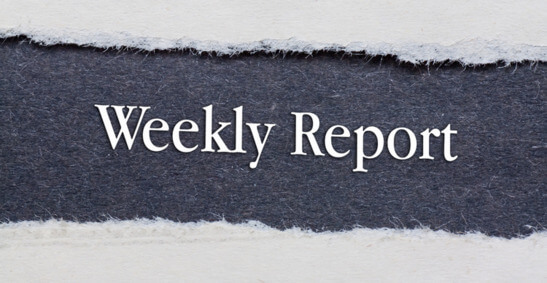Artificial Intelligence (AI) has revolutionized many aspects of technology, and one of its most fascinating applications is in generating images. From stunningly realistic portraits to entirely imaginative creations, AI can generate visuals that might otherwise be impossible to create. Google, with its array of AI tools and platforms, has made it easier than ever to explore this technology. But what if you want Google to generate images that are a bit out of the ordinary, perhaps even super weird? This blog will guide you through the process of asking Google to create AI-generated images, even if they push the boundaries of conventionality. We’ll cover the tools you need, how to craft your request effectively, and what to expect from this quirky digital art adventure.
Understanding AI-Generated Images
Before diving into the process, it’s crucial to understand what AI-generated images are. These images are created by algorithms that learn from vast datasets of existing images. The AI uses patterns and styles from these datasets to create new images that can range from realistic to surreal. Google's AI tools, such as DeepDream and Google’s Arts & Culture project, leverage this technology to create stunning visuals.
2. Google’s AI Tools for Image Generation
Google offers several tools and platforms that utilize AI for image generation. Here’s a brief overview of the most relevant ones:
DeepDream: Originally developed as a way to visualize the inner workings of neural networks, DeepDream transforms images into dream-like creations by enhancing patterns it recognizes.
Google’s Arts & Culture App: This app includes various AI features, such as style transfer, where you can apply artistic styles to your photos, creating unique images.
Colab Notebooks: Google Colab provides a platform for coding and running AI models. It’s a powerful tool if you’re comfortable with programming and want to experiment with AI-generated images using pre-trained models or your own.
3. Crafting Your Request for AI-Generated Images
Getting AI-generated images from Google involves a few key steps. Here’s a step-by-step guide to help you make the most of these tools:
3.1. Choose the Right Tool
Decide which tool best fits your needs. For whimsical and surreal images, DeepDream is a great choice. If you’re interested in style transfer or other creative effects, the Arts & Culture app might be more appropriate. For custom AI models, Google Colab is ideal.
3.2. Define Your Request
Be clear about what you want. The more specific you are, the better the results. For instance, if you want a bizarre image, you might specify certain surreal elements or abstract concepts.
Example Request for DeepDream: “I want an image of a city skyline transformed into a dream-like scene with exaggerated patterns and vivid colors.”
Example Request for Style Transfer: “I’d like a photo of a forest to be transformed with the style of Van Gogh’s Starry Night.”
3.3. Input Your Parameters
For tools like Google Colab, you’ll need to input parameters or code snippets to guide the AI. This might involve specifying the style, image source, or other variables.
4. Generating AI-Images with Google’s Tools
4.1. Using DeepDream
Find a DeepDream Tool: Search for a DeepDream generator online or use a pre-configured Colab notebook.
Upload Your Image: Choose an image to be transformed or use a sample provided by the tool.
Adjust Parameters: Set the level of enhancement and other settings according to your preference.
Generate the Image: Let the AI process your request and produce the transformed image.
Review and Save: Check the result and download the image if you’re satisfied with it.
4.2. Using Google’s Arts & Culture App
Download the App: Available on iOS and Android.
Select the Feature: Choose a feature like style transfer from the app’s menu.
Upload or Capture a Photo: Use an existing photo or take a new one.
Choose an Artistic Style: Pick from the available styles or upload your own.
Apply the Style: Let the AI work its magic and create the new image.
Save or Share: Save the generated image or share it directly from the app.
4.3. Using Google Colab
Open a Colab Notebook: Find a notebook that suits your needs or create a new one.
Input Your Code: Use pre-written code snippets or write your own to set up the AI model.
Upload Your Image: Add the image you want to transform.
Run the Model: Execute the code to generate your image.
Download the Result: Save the generated image to your device.
5. What to Expect
AI-generated images can be incredibly diverse. You might get results that are strikingly beautiful, amusingly bizarre, or just plain weird. AI models interpret inputs based on their training data, so the results can vary widely depending on the tool and the parameters you set.
6. Tips for Better Results
Experiment: Don’t be afraid to try different tools and parameters to see what works best for your vision.
Be Specific: The more detailed your request, the more likely you are to get an image that matches your expectations.
Explore Communities: Join forums or social media groups focused on AI art to get inspiration and tips.
7. Ethical Considerations
When generating AI images, be mindful of ethical implications, such as copyright and the portrayal of sensitive subjects. Ensure that the images you create and share respect the rights and sensitivities of others.
8. Conclusion
Asking Google to generate AI images, even if they’re super weird, is a fascinating way to explore the boundaries of digital creativity. By choosing the right tools and crafting your requests carefully, you can create unique and imaginative visuals that push the limits of conventional art. So go ahead, unleash your creativity, and let AI take your images to new, quirky heights!
FAQ
Q: Do I need any special software to use Google’s AI tools for image generation?
A: For tools like DeepDream and style transfer, you generally only need a web browser and internet access. Google Colab requires some familiarity with coding, but there are many pre-configured notebooks available that make the process easier.
Q: Can I use my own images for AI generation?
A: Yes, most AI tools allow you to upload your own images. This is often the best way to achieve results that are tailored to your specific needs.
Q: Are there any costs associated with using Google’s AI tools?
A: Many of Google’s AI tools are free to use, but some advanced features or extensive usage might incur costs, especially if you use Google Cloud services or other premium features.
Q: How can I ensure my AI-generated images are high quality?
A: Start with high-resolution input images and experiment with different settings and tools to find the best results. Quality also depends on the AI model and its training data.
Q: Can I use AI-generated images commercially?
A: This depends on the tool and its terms of service. Always check the licensing and usage policies of the AI tools you use to ensure that you comply with their rules.
Q: What if I’m not satisfied with the generated images?
A: You can adjust the parameters and try different tools or styles to achieve better results. Experimentation is key to finding the perfect image.
Get in Touch
Website – https://www.webinfomatrix.com
Mobile - +91 9212306116
Whatsapp – https://call.whatsapp.com/voice/9rqVJyqSNMhpdFkKPZGYK
Skype – shalabh.mishra
Telegram – shalabhmishra
Email - info@webinfomatrix.com









 English (US) ·
English (US) ·